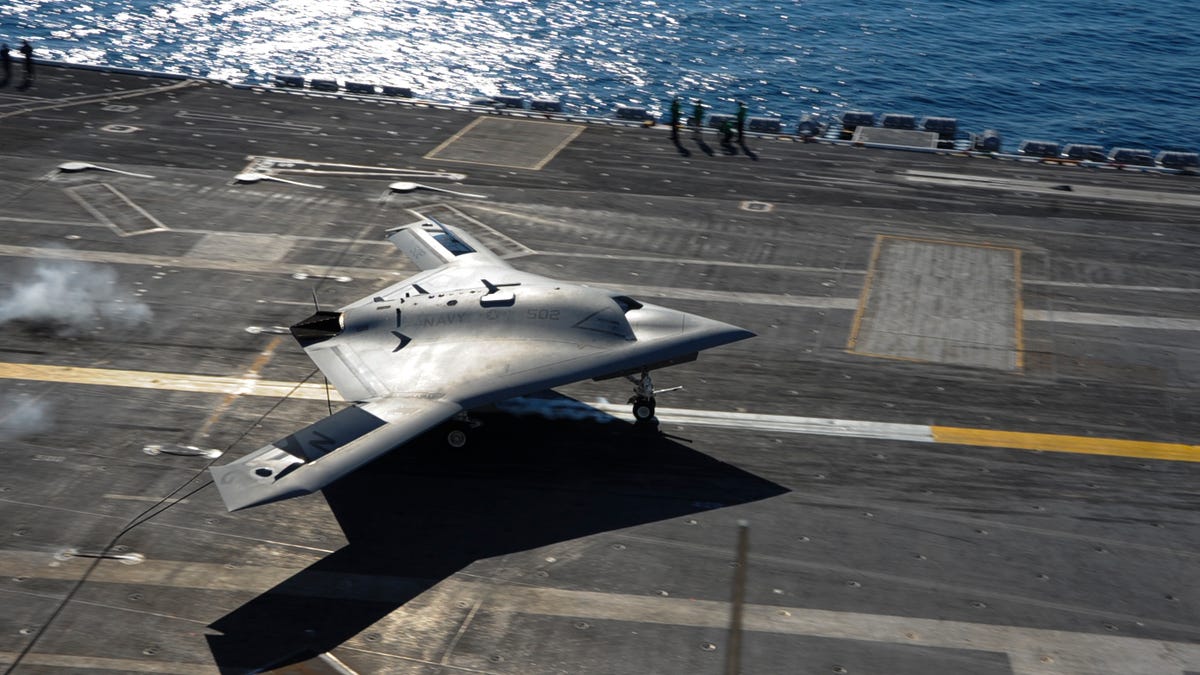The Navy's unmanned X-47B flies again
Picking up where it left off during the summer, the futuristic aircraft carries out at-sea maneuvers on and around its third aircraft carrier.

The experimental, unmanned X-47B continues to get its sea legs.
The US Navy over the weekend resumed at-sea testing of the X-47B, also known as the Unmanned Combat Air System Demonstrator (UCAS-D), which has put a gleam in the Pentagon's eye about someday equipping carrier strike forces with autonomous aircraft. Before that day comes, the Navy needs to be very, very sure that robo-planes can work smoothly and safely amid all the other activity on and around an aircraft carrier's flight deck.
In an unspecified number of 45-minute flights, the Northrop Grumman-built X-47B performed catapult launches and arrested landings and carried out "precise" touch-and-go maneuvers with the USS Theodore Roosevelt (CVN 71), now the third carrier that has participated in testing of the futuristic aircraft. The aircraft flies autonomously, according to preprogrammed flight plans, though its maneuvers were monitored by operators equipped with a portable command and control unit.
"Today, we took another significant step toward integration of unmanned capabilities into our carrier airwings and aircraft carrier environments," said Rear Adm. Mat Winter, in a statement.
The Navy has been evaluating a pair of X-47B aircraft, known by the call signs of Salty Dog 501 and Salty Dog 502, over the last couple of years, gradually building up from land-based tests to sea trials that began in late 2012. The first catapult launch from a carrier flight took place in May of this year, and in July an X-47B made its first-ever arrested landing on a carrier, a tricky maneuver for any aircraft.
The tailless, jet-powered machine has a wingspan of 62 feet, which makes it nearly twice as wide as it is long, and about 17 feet wider than the Navy's F/A-18 Super Hornet. It has a top speed in the "high subsonic" range, a ceiling of 40,000 feet, and a range of about 2,100 nautical miles.
The UCAS-D program, which is also helping to test the virtues of a digitized carrier environment, is a forerunner to an eventual Unmanned Carrier Launched Airborne Surveillance and Strike (UCLASS) system, which could yield a new crop of unmanned aircraft with both surveillance and strike capabilities by 2020.

